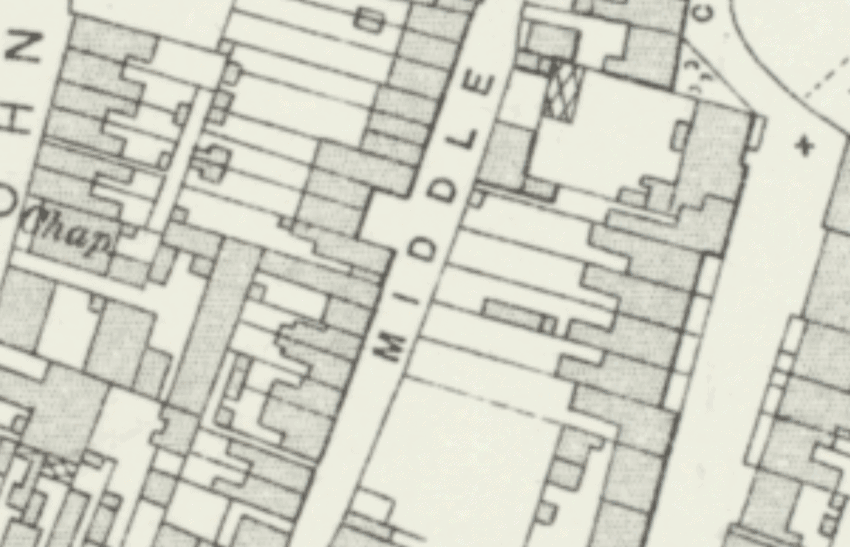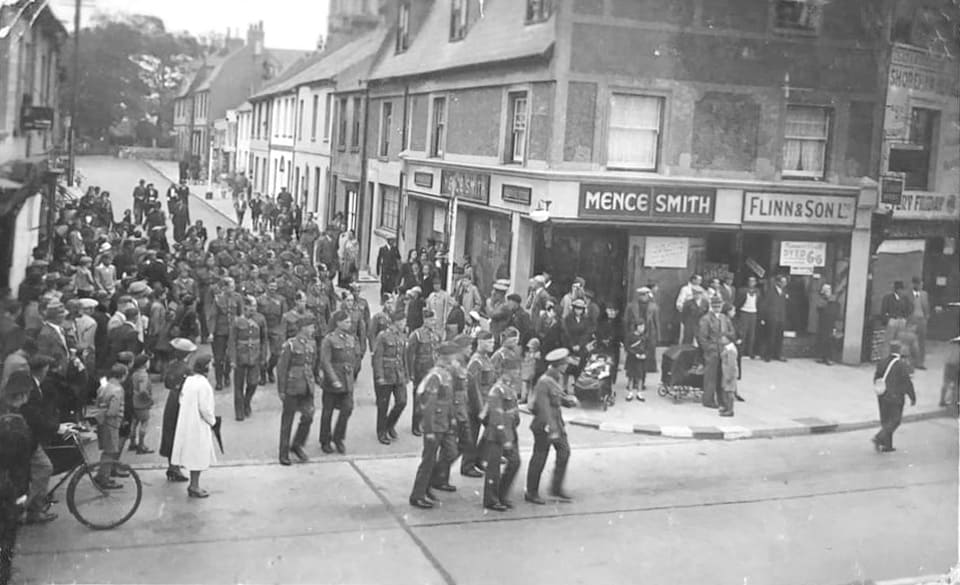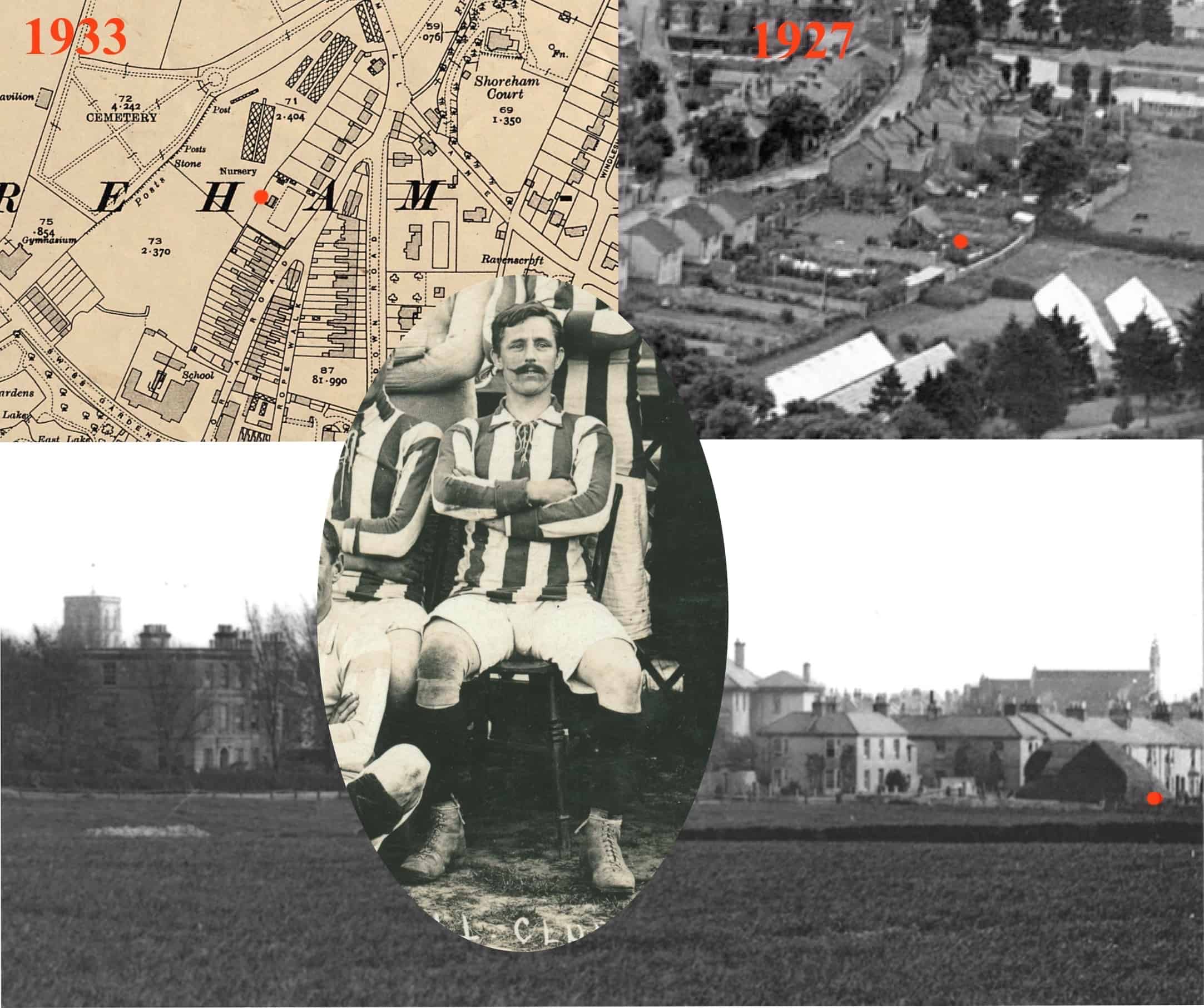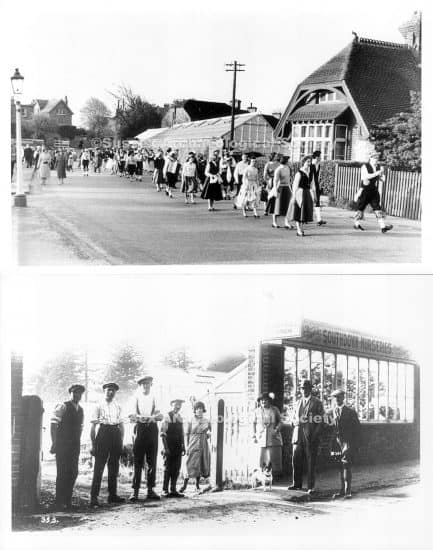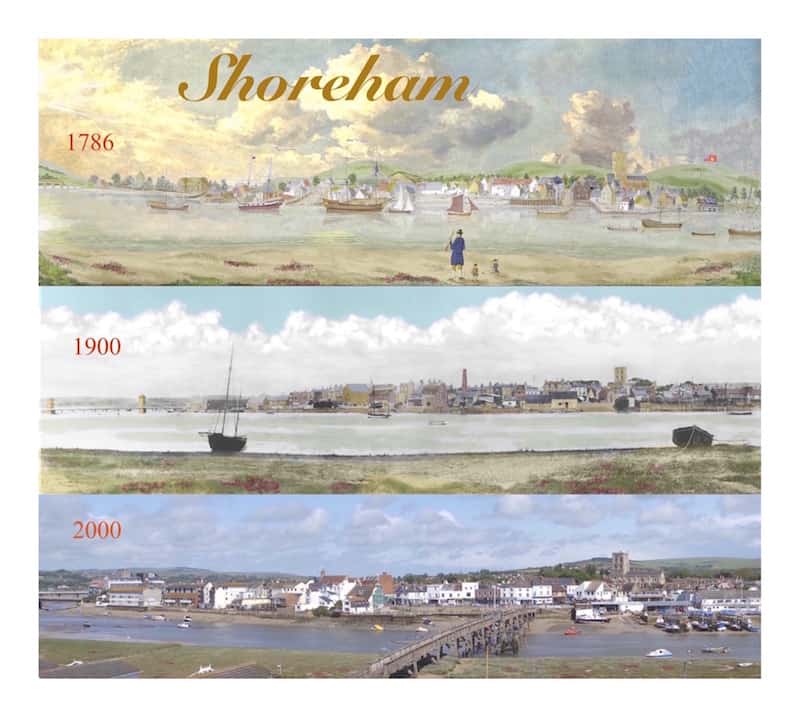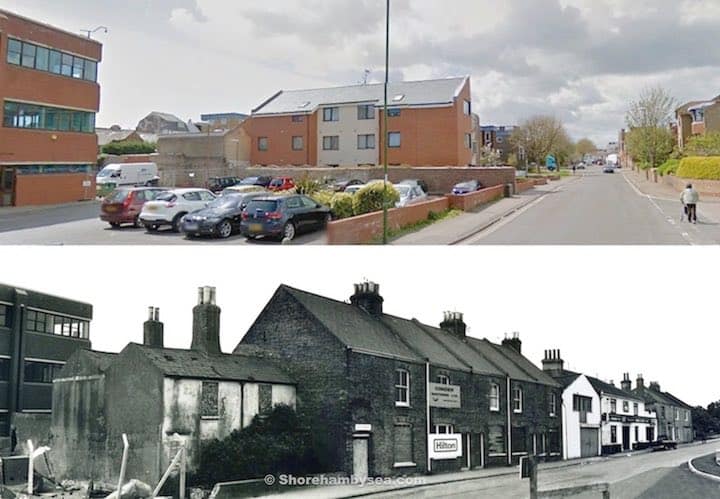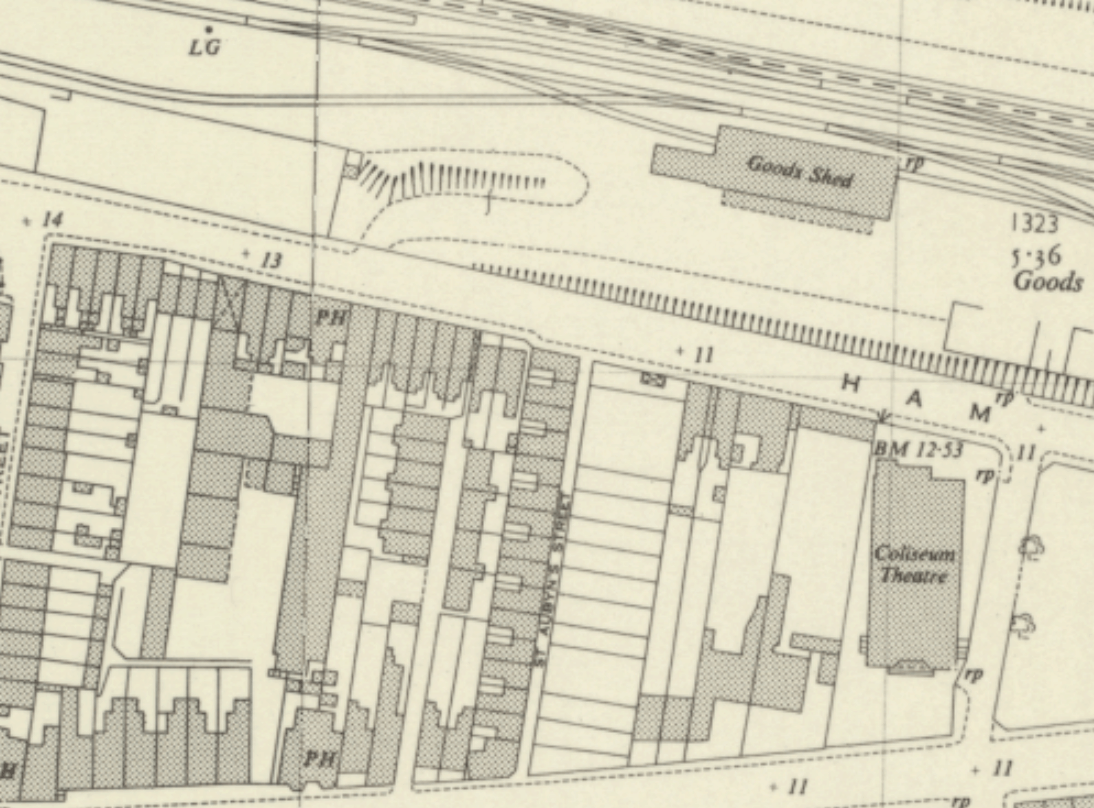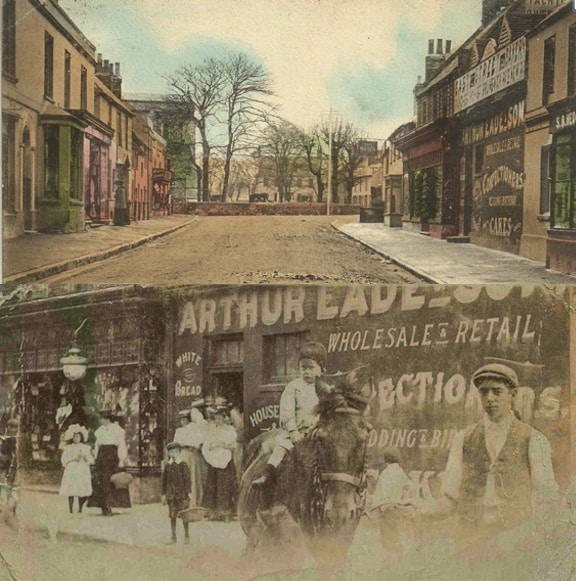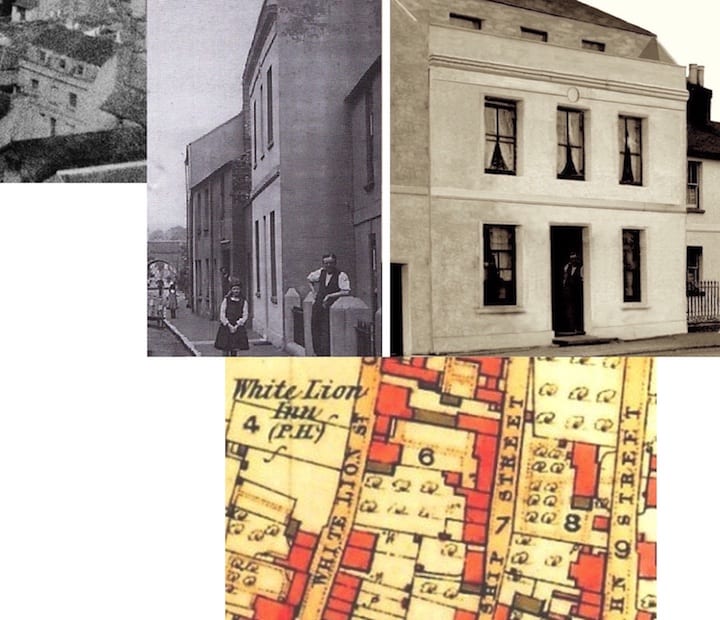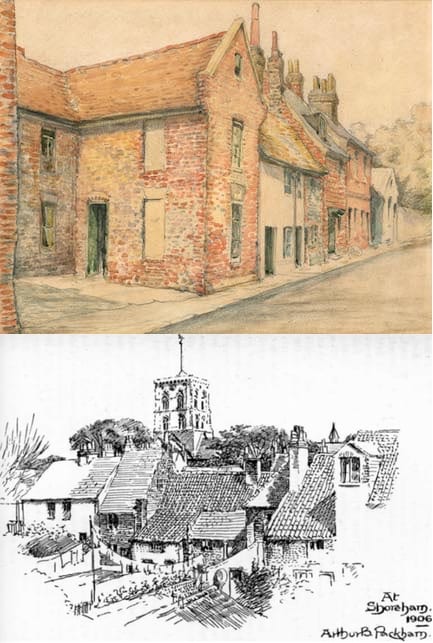WW2 photos are quite rare – this one courtesy of Trisha Robb, shows the junction of Church Street and High Street.
West Street’s history resurfaces?
How long does dried tar last? History tells us it can be centuries. A few years ago they cut the cypress trees and undergrowth down on the north side of the catholic church car park and revealed spilt tar on the west end of the railway wall. Even after the railways came (1840’s) they continued to twist and tar the ropes under and through the bridge from West Street to the top of Ropewalk and still laid out their tarred sails to dry up until the 1880’s.
They used Stockholm tar, a clearish amber colour, very slow drying and kept supple on ships’ ropes and sails by continuous reapplication but, apparently, when it does eventually dry it turns black. Is this a century (and a bit) evidence of that industry where brushes were wiped of excess tar? Sadly I doubt it – probably more like an accident by a clumsy worker during the tarmacing of the church car park I guess.
West Street’s ropemaking history:- http://www.shorehambysea.com/1400-2/
Charles Peak and Southdown Nursery
Some time ago Spinalman drew our attention to a late 19th century photo of what looked like upturned boat/ship hulls, presumably used as sheds, on the west side of Victoria Road opposite the point where Rope Walk meets Victoria. Looking through the 1927 ‘Britain from Above’ aerial photos I wondered if one of them still survived at that time. I don’t think it is but Charles Edward Peak, left wing for Shoreham FC’s 1905/6 record breaking side and fruit grower owned the Southdown Nursery at the top of The Meads recreation ground (where the greenhouses are) and lived at the house shown side-on at the corner of the plot in question (then 16 Victoria Road, now number 77). It looks like a lovely little oasis in an encroaching sea of houses and may well have belonged to Peak as well. Other photos of the main entrance are also attached.
Panorama through the ages
No, not a Christmas card but a copy of a group of Shoreham panoramas over the centuries that we put together before the latest footbridge was built – all it needs now is for some kind soul to take a ‘today’ photo from the top of Pacific Court to update it.
Coastguard Cottages Southwick
Our local Coastguard Service was originally located in the cottages on the beach at the end of Ferry Road but by the early 1900’s were relocated to Kingston then soon after to purpose built accommodation at Southwick. Sad to say the view of them there is now obscured by later buildings incredibly permitted to be erected in front of all of them except for the Chief Officer’s house that fronts on to the main road.
This photo of the cottages as they once appeared is a composite produced jointly with Neil De Ville.
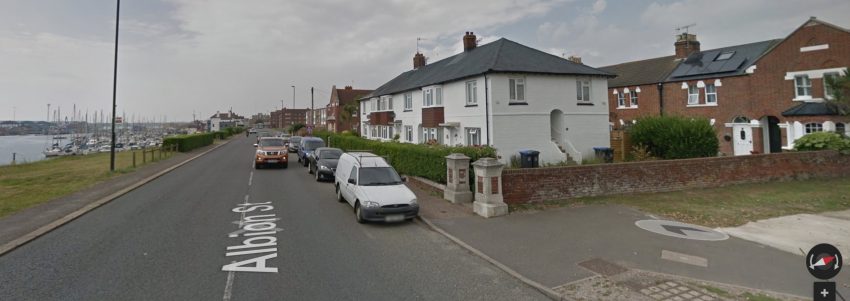
Panoramas of Shoreham
– Albion Place looking east to The Duke of Wellington and Tarmount beyond
– The town from the church tower circa 1920. Due to it’s size this has to be a much reduced copy and as yet is not totally finished.
(click on the image to enlarge it )
Ham Road
East Street c1900
A somewhat different East Street circa 1900 with Eade’s Store where Toast by the Coast is now and next door George Hedgecock’s shoe shop (nowTeddy’s).
Lower photo from the Hedgecock Collection on this website
White Lion Inn
Often missed on the 1872 map is the name ‘White Lion Street’ in the place of West Street. It was renamed as such, for a short while at least, due to the influence of the landlord of the White Lion Inn. We only have a vague aerial shot and an acute angle view of the Inn but this computerised reproduction gives more of an idea of how it looked.
History under a car park
A little known story is about the demolition of the lovely old cottages in Middle Street that were replaced by today’s car park. Why just those in between other similar cottages in the street? It seems the whole row were considered then to be unfit for human habitation and, true or not, one of the criteria was said to be a lack of natural light (which of course many old buildings do suffer from). During the inspection of those in Middle Street the council official responsible for approving the demolishing had reached the cottages beyond today’s car park and, when asked if she needed the light on to be able to see, replied she could see perfectly well. In doing so she could not then condemn it and that, I am told, is why the rest survived.
